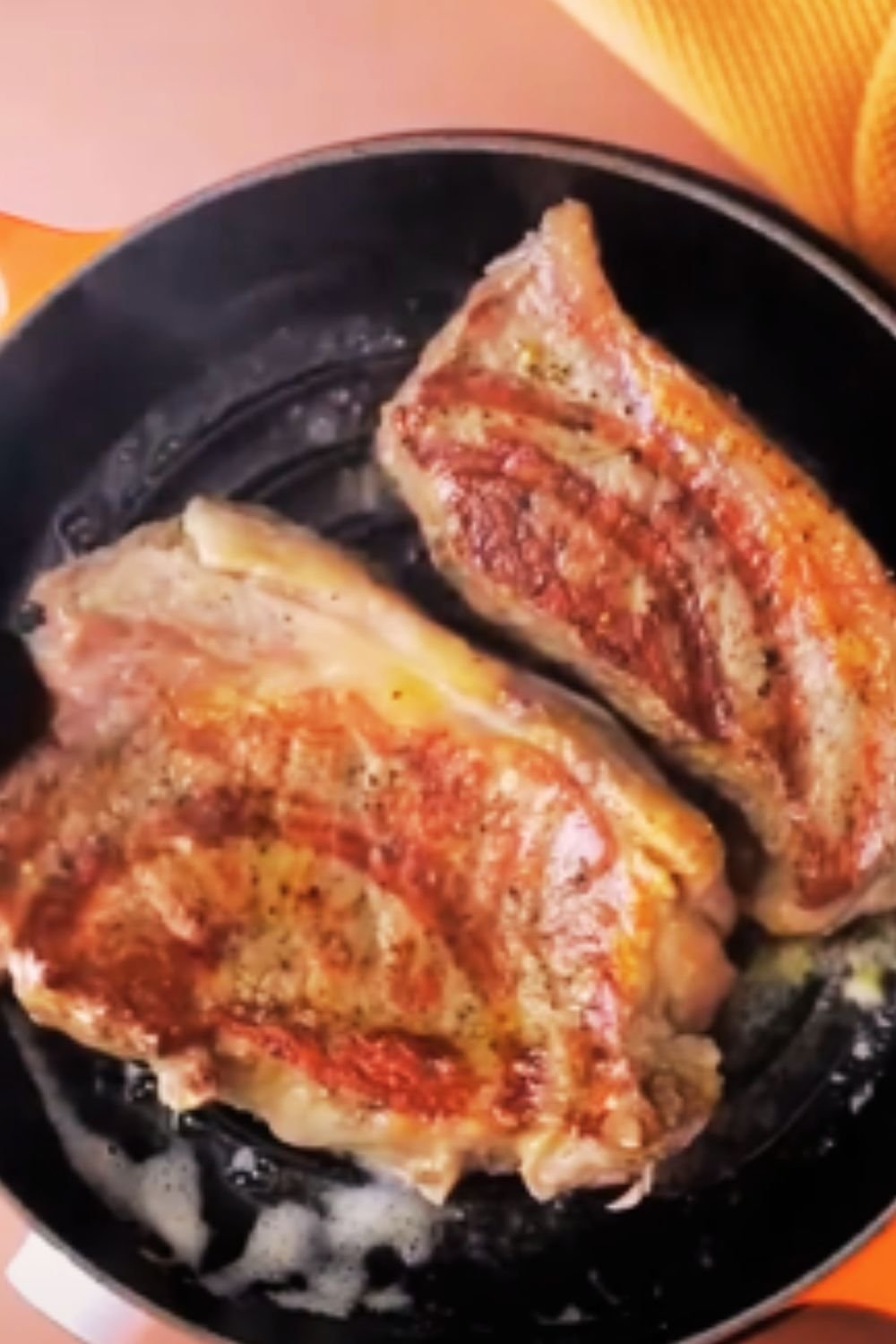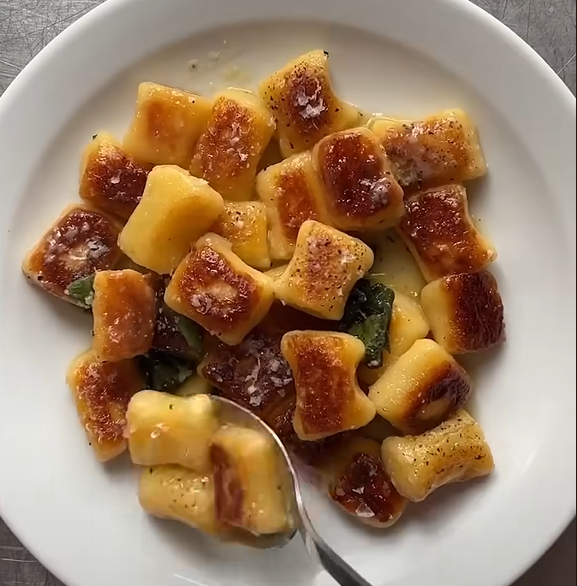When I first discovered the magic of baking bread in my Le Creuset Dutch oven, it completely transformed my approach to homemade bread making. There’s something incredibly satisfying about creating a perfectly crusty, golden loaf with a tender, airy interior using nothing more than basic ingredients and the right technique. Today, I’m excited to share my comprehensive guide to mastering basic oven bread using Le Creuset cookware – a method that has become my go-to for consistently excellent results.
The beauty of using Le Creuset for bread baking lies in its superior heat retention and distribution. My cast iron Dutch oven creates the perfect mini steam environment that professional bakeries use, resulting in that coveted crispy crust and perfectly developed crumb structure. Over the years, I’ve refined this technique through countless loaves, and I’m confident that following my method will help you achieve bakery-quality bread at home.
Understanding the Le Creuset Advantage
Cast Iron Heat Retention: The exceptional thermal mass of Le Creuset cast iron maintains consistent temperature throughout the baking process, eliminating hot spots that can cause uneven browning.
Steam Creation: When you place dough into a preheated covered pot, the moisture from the dough creates steam, which is essential for proper crust development and oven spring.
Even Heat Distribution: Unlike standard baking sheets or loaf pans, the thick walls of Le Creuset cookware ensure heat reaches every part of your bread evenly.
Professional Results: This method mimics the steam-injected ovens used in commercial bakeries, allowing home bakers to achieve professional-quality results.
Essential Ingredients and Their Roles
Understanding each ingredient’s function has helped me troubleshoot countless baking challenges over the years. Here’s my breakdown of the essential components:
Bread Flour vs. All-Purpose Flour: I prefer bread flour for its higher protein content (12-14%), which develops more gluten and creates better structure. However, all-purpose flour (10-12% protein) works well too and produces a slightly more tender crumb.
Active Dry Yeast vs. Instant Yeast: I typically use active dry yeast, which requires proofing in warm water. Instant yeast can be mixed directly with dry ingredients but works just as effectively.
Salt’s Multiple Functions: Beyond flavor, salt strengthens gluten structure, controls yeast activity, and helps retain moisture in the finished loaf.
Water Temperature: I’ve learned that water temperature is crucial – too hot kills yeast, too cold slows fermentation. My sweet spot is 100-110°F (38-43°C).
My Perfected Le Creuset Bread Recipe
Ingredients
| Ingredient | Amount | Purpose | Notes |
|---|---|---|---|
| Bread flour | 3 cups (360g) | Structure and gluten development | Can substitute with all-purpose |
| Warm water | 1¼ cups (300ml) | Yeast activation and dough formation | 100-110°F optimal temperature |
| Active dry yeast | 1 packet (2¼ tsp) | Leavening agent | Check expiration date |
| Salt | 1½ teaspoons | Flavor and gluten strengthening | Fine sea salt preferred |
| Sugar | 1 tablespoon | Yeast food and browning | Optional but recommended |
| Olive oil | 2 tablespoons | Texture and shelf life | Extra virgin preferred |
Equipment Needed
- Le Creuset Dutch oven (5-7 quart capacity)
- Large mixing bowl
- Kitchen scale (highly recommended)
- Clean kitchen towels
- Parchment paper
- Sharp knife or razor blade

Step-by-Step Baking Process
Phase 1: Dough Preparation
I start by proofing my yeast to ensure it’s active. In a small bowl, I combine the warm water with sugar, then sprinkle the yeast over the surface. Within 5-10 minutes, the mixture should become foamy and fragrant – this tells me the yeast is alive and ready to work.
In my large mixing bowl, I whisk together the flour and salt. Creating a well in the center, I pour in the activated yeast mixture and olive oil. Using a wooden spoon, I stir until a shaggy dough forms. The dough will look rough and slightly sticky at this stage – that’s exactly what I want.
Phase 2: Kneading and First Rise
I turn the dough onto a lightly floured surface and begin kneading. My technique involves pushing the dough away from me with the heel of my hand, folding it back over itself, giving it a quarter turn, and repeating. This process develops the gluten structure that gives bread its characteristic texture.
After 8-10 minutes of kneading, the dough should feel smooth and elastic. I perform the “windowpane test” – stretching a small piece of dough between my fingers. If it stretches thin enough to see light through without tearing, the gluten is properly developed.
I place the kneaded dough in a lightly oiled bowl, turning it to coat all surfaces. Covering with a damp towel, I let it rise in a warm, draft-free location for 1-1.5 hours, until doubled in size.
Phase 3: Shaping and Second Rise
Once the dough has doubled, I gently punch it down to release excess gas. On a lightly floured surface, I shape it into a round boule by tucking the edges under and rotating the dough to create surface tension.
I place the shaped dough seam-side down on parchment paper, cover with a towel, and let it rise for another 45-60 minutes. The dough is ready when it springs back slowly after being gently poked with a finger.
Phase 4: Le Creuset Oven Method
Thirty minutes before baking, I place my Le Creuset Dutch oven with its lid in the oven and preheat to 450°F (232°C). This preheating step is crucial – the pot needs to be scorching hot to create the initial steam burst.
When ready to bake, I carefully remove the hot pot using heavy oven mitts. Using the parchment paper as a sling, I lower the dough into the pot. I score the top with a sharp knife or razor blade, making 2-3 diagonal slashes about ¼ inch deep. This allows the bread to expand properly during baking.
Baking Timeline and Temperature Guide
| Phase | Temperature | Time | Lid Status | Expected Result |
|---|---|---|---|---|
| Initial Steam | 450°F (232°C) | 30 minutes | Covered | Oven spring and crust formation |
| Browning | 425°F (218°C) | 15-20 minutes | Uncovered | Golden brown crust development |
| Final Check | 425°F (218°C) | 5-10 minutes | Uncovered | Internal temperature 205-210°F |
I cover the pot and place it back in the oven for 30 minutes. Then I remove the lid, reduce temperature to 425°F (218°C), and continue baking for 15-25 minutes until the crust is deep golden brown.
Troubleshooting Common Issues
Through my years of bread baking, I’ve encountered virtually every problem imaginable. Here are my solutions to the most common issues:
Dense, Heavy Bread: Usually indicates insufficient kneading, old yeast, or not enough rise time. I ensure proper gluten development and give dough adequate time to double.
Pale Crust: Often results from insufficient oven temperature or removing the lid too early. I maintain high heat and ensure the initial covered baking period is complete.
Overly Thick Crust: Can occur from over-baking or too high temperature during the uncovered phase. I monitor closely and reduce temperature if browning too quickly.
Uneven Rise: Typically caused by uneven heat distribution or drafts during rising. I find warm, consistent environments and use my Le Creuset’s even heating to solve this.
Gummy Interior: Results from under-baking or cutting too soon. I always check internal temperature (205-210°F) and let bread cool completely before slicing.
Advanced Techniques for Perfect Results
Autolyse Method
I sometimes employ the autolyse technique, mixing flour and water 30 minutes before adding yeast and salt. This allows flour to hydrate fully and begins gluten development, resulting in better texture and easier kneading.
Overnight Fermentation
For deeper flavor, I occasionally refrigerate the dough after the first rise for 8-24 hours. This slow fermentation develops complex flavors similar to artisan breads.
Steam Enhancement
While Le Creuset creates excellent steam naturally, I sometimes add extra moisture by placing a small oven-safe dish of boiling water on the bottom rack during the initial baking phase.
Variations and Flavor Additions
Herb and Garlic Bread
I incorporate 2 tablespoons of fresh herbs (rosemary, thyme, or oregano) and 3 minced garlic cloves into the dough during kneading. This creates an aromatic loaf perfect for dinner accompaniments.
Whole Wheat Variation
Substituting up to half the bread flour with whole wheat flour adds nutrition and nutty flavor. I increase water slightly as whole wheat absorbs more liquid.
Seeds and Grains
Adding 2-3 tablespoons of seeds (sesame, poppy, sunflower) or grains provides texture and visual appeal. I either incorporate them into the dough or brush the surface with water and sprinkle on top before baking.
Storage and Preservation Methods
Proper storage maintains my bread’s quality for days. I cool loaves completely before storing to prevent condensation that causes soggy crusts.
Short-term Storage: I wrap cooled bread in clean kitchen towels or place in paper bags, which maintain crust crispness while preventing excessive drying.
Long-term Storage: For storage beyond 3 days, I slice the bread and freeze portions in airtight bags. Frozen slices toast directly from frozen, making them convenient for quick meals.
Reviving Day-Old Bread: I refresh slightly stale loaves by misting with water and heating in a 350°F oven for 5-10 minutes, which restores crust crispness.
Nutritional Benefits and Considerations
| Nutrient | Per Slice (1/12 loaf) | Daily Value % | Health Benefits |
|---|---|---|---|
| Calories | 145 | 7% | Energy provision |
| Carbohydrates | 28g | 9% | Primary energy source |
| Protein | 5g | 10% | Muscle maintenance |
| Fiber | 1.2g | 4% | Digestive health |
| Iron | 1.8mg | 10% | Oxygen transport |
| B Vitamins | Varies | 5-8% | Metabolism support |
Homemade bread offers superior nutrition compared to commercial varieties, with no preservatives or unnecessary additives. I control every ingredient, ensuring wholesome nutrition for my family.
Serving Suggestions and Pairings
My Le Creuset bread pairs beautifully with various accompaniments:
Breakfast Options: I love thick slices toasted with butter and jam, or topped with avocado and a sprinkle of sea salt. French toast made from day-old bread is exceptional.
Lunch Combinations: The bread makes excellent sandwiches with its sturdy crust and soft interior. I particularly enjoy it with roasted vegetables, fresh cheese, or quality deli meats.
Dinner Accompaniments: Warm slices complement soups, stews, and pasta dishes perfectly. I often serve it alongside olive oil and balsamic vinegar for dipping.
Appetizer Applications: Sliced thin and toasted, it becomes an excellent base for bruschetta or crostini topped with seasonal ingredients.
Seasonal Adaptations
Summer Baking
During warmer months, I reduce rising times as heat accelerates fermentation. I also seek cooler areas of my kitchen for dough development.
Winter Considerations
Cold weather slows yeast activity, so I create warm environments using my oven light or placing dough near (not on) heating sources.
Holiday Variations
I adapt the basic recipe for festive occasions, incorporating ingredients like cranberries and walnuts for Thanksgiving, or herbs and cheese for holiday entertaining.
Economic Benefits of Homemade Bread
| Cost Comparison | Homemade | Store-bought Artisan | Savings |
|---|---|---|---|
| Per loaf | $0.75 | $4.50 | $3.75 |
| Monthly (8 loaves) | $6.00 | $36.00 | $30.00 |
| Annual savings | – | – | $360.00 |
Beyond financial savings, homemade bread provides superior quality, freshness, and the satisfaction of creating something wholesome from basic ingredients.
Environmental Impact
Baking bread at home reduces packaging waste, transportation emissions, and supports sustainable practices. I source ingredients locally when possible, further minimizing environmental impact.
Questions and Answers
Q: Can I use my Le Creuset Dutch oven if it has some wear or seasoning issues?
Minor wear doesn’t affect bread baking performance. The key is ensuring the pot heats evenly and the lid fits properly to create steam. Even well-used Le Creuset performs excellently for bread baking.
Q: What size Le Creuset Dutch oven works best for this recipe?
I recommend 5-7 quart capacity. Smaller pots restrict oven spring, while larger ones don’t create sufficient steam concentration. My 5.5-quart round Dutch oven is perfect for standard loaves.
Q: How do I know when my bread is properly baked without cutting into it?
I use three indicators: deep golden brown crust, hollow sound when tapped on the bottom, and internal temperature of 205-210°F measured with an instant-read thermometer inserted into the center.
Q: Can I make this recipe without a kitchen scale?
While I strongly recommend weighing ingredients for consistency, you can use volume measurements. However, flour measurement varies significantly, so I suggest the “spoon and level” method rather than scooping directly with the measuring cup.
Q: Why does my bread sometimes have large holes in some areas and dense spots in others?
Uneven mixing or insufficient kneading typically causes this. I ensure thorough ingredient incorporation and proper gluten development through adequate kneading. Also, gentle handling during shaping prevents deflating gas bubbles unevenly.
Q: Can I prepare the dough ahead of time?
Absolutely! I often prepare dough the evening before, letting it rise slowly in the refrigerator overnight. This cold fermentation actually improves flavor. I bring it to room temperature before shaping and final rising.
Q: What’s the best way to achieve those beautiful scoring patterns I see on artisan breads?
Sharp tools are essential – I use a razor blade or very sharp knife. I score quickly and decisively, about ¼ inch deep, just before baking. Confidence in the motion prevents dragging that can deflate the dough.
Q: My bread crust is too thick and hard to cut through. How can I fix this?
This usually indicates over-baking or too high temperature during the uncovered phase. I reduce the final baking temperature to 400°F and cover loosely with foil if browning too quickly. Also, proper cooling allows moisture to redistribute, softening the crust slightly.
Q: Can I double this recipe to make two loaves at once?
Yes, but I bake them separately for best results. Two loaves in one pot don’t develop properly. I shape both, let one rise while baking the first, then bake the second. Alternatively, I refrigerate the second shaped loaf until ready to bake.
Q: How do I prevent my bread from sticking to the Le Creuset pot?
I never grease the pot directly. Instead, I use parchment paper as a sling, which allows easy removal and prevents sticking. The paper handles the high heat beautifully and makes transfer simple and safe.
The journey to perfect Le Creuset bread baking has been incredibly rewarding. Each loaf teaches me something new, and the satisfaction of pulling a beautiful, aromatic loaf from my Dutch oven never gets old. I encourage you to experiment with this method, make adjustments based on your preferences, and most importantly, enjoy the process. There’s something deeply satisfying about creating nourishing bread with your own hands, and I’m confident this technique will serve you well for years to come.
Remember, bread baking is as much art as science. Don’t be discouraged if your first few loaves aren’t perfect – mine certainly weren’t! With practice and patience, you’ll develop the intuition that makes great bread bakers, and your Le Creuset Dutch oven will become your most trusted baking companion.


